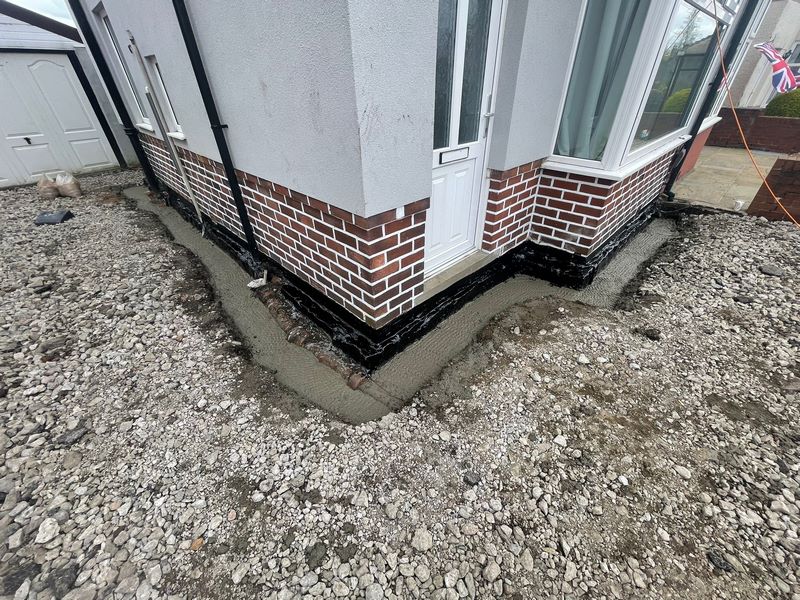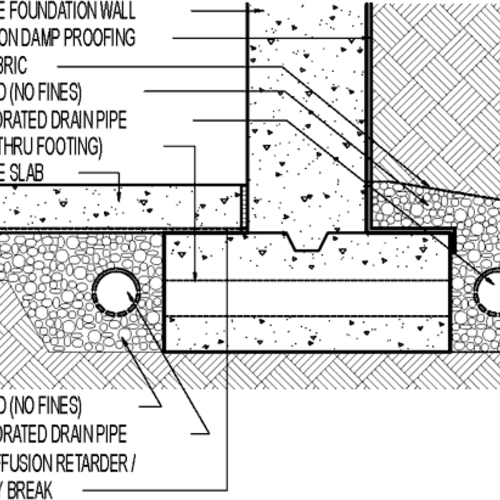Effective ways to manage humidity with mould treatment newcastle
Effective ways to manage humidity with mould treatment newcastle
Blog Article
Checking Out the Different Techniques and Solutions for Effective Damp Proofing
Moisture in structures presents considerable difficulties to both structural honesty and interior air top quality. Numerous strategies and solutions have actually emerged to battle this pervasive problem. From conventional damp-proof membrane layers to innovative chemical treatments, each approach uses distinct advantages. Understanding these options is important for effective wetness control. Nonetheless, choosing the appropriate service depends upon certain structure conditions and needs, motivating more exploration right into the most efficient wet proofing strategies readily available.
Recognizing the Causes of Dampness
Although moisture can develop from numerous sources, comprehending these reasons is crucial for effective remediation. Generally, moisture stems from three main sources: rising damp, permeating moist, and condensation. Increasing damp happens when groundwater travels up-wards with permeable materials, such as brick or rock, usually as a result of a lack of an efficient obstacle (damp proofing newcastle). Passing through wet is typically triggered by outside aspects, consisting of roof leaks, faulty gutters, or damaged walls, permitting water to infiltrate a building. Condensation, on the other hand, arises from excess wetness airborne, usually aggravated by inadequate ventilation and temperature level differences, leading to water droplets creating on surface areas. Identifying these underlying problems is essential, as each sort of moisture calls for a customized strategy for removal. Correct assessment helps in determining one of the most effective solutions, ultimately protecting the architectural honesty of a structure and enhancing interior air top quality
Traditional Damp-Proof Membrane Layers

Chemical Damp-Proofing Solutions
Chemical damp-proofing remedies provide a cutting-edge approach to avoid moisture breach in structures. These approaches typically entail the application of liquid chemicals that penetrate stonework and create an obstacle versus climbing wet. Generally used chemicals include silanes, siloxanes, and various other water-repellent representatives that react with surface area materials to produce a hydrophobic layer.The application procedure generally needs boring openings right into the wall surfaces, infusing the chemical option, and enabling it to treat. This method is specifically useful for older structures where conventional damp-proof membrane layers might be impractical. Additionally, chemical damp-proofing can be much less disruptive and extra affordable than extensive remodelling projects.While efficient, these solutions depend on proper application and ecological conditions for peak efficiency. Regular maintenance and monitoring are vital to assure the longevity of the damp-proofing therapy. In general, chemical damp-proofing represents a flexible alternative for securing structures against moisture-related damage
Dental Caries Wall Surface Construction Methods
Dental caries wall surface building techniques provide many advantages, especially in moisture control and power efficiency. By incorporating an air gap in between two layers of stonework, these wall surfaces efficiently alleviate water access while enhancing insulation. This mix not just protects frameworks from dampness however additionally adds to minimized energy intake.
Advantages of Tooth Cavity Walls
When considering reliable wet proofing techniques, the advantages of tooth cavity wall surfaces attract attention plainly. Tooth cavity walls are composed of 2 separate layers, creating an air space that efficiently minimizes wetness infiltration. This layout lessens the danger of dampness, as the outer wall surface functions as an obstacle against rainfall and water ingress. In addition, cavity wall surfaces boost thermal insulation, which adds to power effectiveness by lowering heat loss. They likewise give audio insulation, assisting to produce a quieter indoor environment. The air space permits for ventilation, which helps in moisture control and minimizes the likelihood of mold and mildew development. These advantages not only enhance the total comfort of a structure yet also contribute to its durability and structural integrity.
Dampness Control Approaches
Effective dampness control methods are critical in tooth cavity wall surface construction to guarantee long-term security against moisture. One main method entails the consolidation of weep holes, which facilitate water drainage from the dental caries, stopping buildup. Furthermore, the usage of breathable membranes can assist manage moisture degrees while enabling caught vapor to run away. Appropriate placement of insulation is likewise important, as it needs to not block drainage paths. Moreover, making certain that the external leaves of the cavity wall are constructed with water-resistant products enhances total longevity. Normal upkeep checks are essential to recognize any type of obstructions or damages early, securing the framework's stability. Ultimately, a mix of these techniques develops a durable protection against moisture breach in dental caries walls.
Insulation and Energy Efficiency
Insulation plays a vital function in enhancing energy efficiency within cavity wall building. By including insulating materials, these walls produce a thermal obstacle that reduces warm loss and decreases energy usage. Efficient insulation not only helps preserve a stable indoor temperature but additionally mitigates the threat of wetness, as it prevents condensation within the wall cavity. Numerous techniques, such as making use of inflexible foam boards or mineral woollen, can be used to attain optimal insulation efficiency. Additionally, correct setup is necessary to ensure that gaps and spaces are decreased, which can otherwise endanger power efficiency. Eventually, a well-insulated cavity wall contributes substantially to total sustainability and lowers heating & cooling prices for home owners.
External Damp Proofing Approaches
External damp proofing approaches are crucial for shielding structures from moisture seepage. 2 reliable techniques consist of the application of water resistant membranes and the setup of French drains. These services assist mitigate water buildup and protect the stability of structures.
Waterproof Membrane Application
While various approaches exist for preventing moisture ingress, the application of water resistant membrane layers continues to be a highly efficient external damp proofing technique. These membranes are typically made from products such as polyethylene, rubber, or modified asphalt, offering a durable barrier against water penetration. The installment procedure entails applying the membrane to the external surface areas of walls or foundations, making sure full coverage to avoid leakages. Appropriate adhesion and sealing at joints are important to making the most of efficiency. Water-proof membranes can be used in numerous forms, including fluid finishings and sheet membranes, permitting versatility based on the certain needs of the structure. This technique not only shields buildings from moisture yet additionally enhances their long life and structural honesty.
French Drain Setup
One effective approach for managing groundwater and protecting against dampness build-up around a building's foundation is the installation of a French drain. This drainage system contains a trench full of crushed rock and a perforated pipeline that reroutes surface area water far from the foundation. Proper setup needs cautious planning, making sure that the drainpipe slopes away from the framework to help with optimal water circulation. Furthermore, the location of the drainpipe is vital; it ought to be positioned in locations vulnerable to merging or excess wetness. Routine maintenance, consisting of clearing particles from the gravel and guaranteeing the pipeline stays unhampered, is important for long-term efficiency. Ultimately, a well-installed French drain can considerably lower the risk of water-related issues in structures and cellars.
Interior Waterproofing Approaches
Inside waterproofing approaches are essential for securing a structure's interior from wetness seepage and potential water damage. These techniques typically involve the application of specific products and methods made to create a moisture barrier within the structure. One typical method is making use of water-proof coverings or sealants on walls and floors, which stop dampness from penetrating surfaces.Additionally, installing interior water drainage systems, such as sump pumps, can effectively manage water accumulation in cellars and crawl rooms. Another technique involves the use of vapor obstacles, which are installed to hinder wetness movement from the ground into living spaces.Moreover, dealing with any fractures or voids in wall surfaces or foundations with proper sealers ensures a complete protection versus water intrusion. By carrying out these indoor waterproofing methods, homeowner can greatly lower the danger of mold and mildew development, structural damage, and various other moisture-related problems. Appropriate execution of these strategies is essential for long-lasting protection and building honesty.
Regular Upkeep and Evaluation Practices
Routine upkeep and examination practices are crucial for assuring the lasting performance of damp proofing services in any building. Regular checks allow home owners to identify very early signs of dampness breach, such as peeling paint, mold and mildew growth, and mildewy smells. These indicators can signify underlying concerns that need prompt attention.Inspections ought to be performed at least every year, concentrating on at risk areas like basements, crawl rooms, and outside wall surfaces. During these assessments, home owners need to examine sealers, drainage systems, and air flow to confirm they function correctly.Additionally, keeping downspouts and gutters is important, as blocked systems can cause water buildup near the structure. Carrying out a normal upkeep timetable, together with timely repair services, can considerably prolong the life-span of moist proofing steps and secure the structural honesty of the building. Proactive measures ultimately contribute to the total wellness and safety of the living atmosphere.
Frequently Asked Concerns
For How Long Does Damp Proofing Generally Last?
The duration of moist proofing efficiency differs, generally lasting in between 20 to half a century. Factors such as application top quality, environmental conditions, and upkeep techniques greatly affect the long life of the wet proofing therapy.

Can I Damp Evidence My Home Myself?
The specific pondered the usefulness of DIY damp proofing. With correct research and the right materials, it is possible. Nonetheless, they additionally identified the value of professional advice to ensure durable performance and protect against future problems.
What Are the Indications of Ineffective Damp Proofing?
Signs of ineffective wet proofing include consistent stuffy odors, noticeable mold and mildew growth, peeling paint, wet spots on walls, and wood decay - mould treatment mould removal newcastle newcastle. Home owners need to resolve these concerns promptly to stop further damages and wellness issues
Does Damp Proofing Affect Indoor Air Quality?

Exactly How Much Does Professional Damp Proofing Price?
Expert damp proofing costs differ considerably, generally varying from $1,000 to $5,000 depending on the building's dimension, the level of the damp problem, and chosen techniques. Each scenario requires a tailored assessment for precise pricing. Frequently, wetness originates from three primary sources: climbing moist, penetrating wet, and condensation. When considering reliable moist proofing approaches, the benefits of dental caries wall surfaces stand out plainly. External damp proofing methods are essential for securing structures from wetness seepage. While numerous approaches exist for stopping moisture access, the application of waterproof membrane layers continues to be an extremely reliable outside moist proofing method. Indicators of inefficient wet proofing include relentless moldy odors, visible mold and mildew growth, peeling off paint, damp spots on wall surfaces, and wood decay.
Report this page